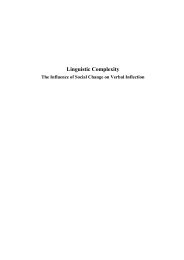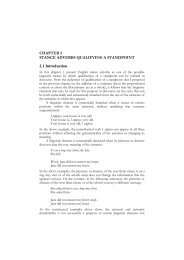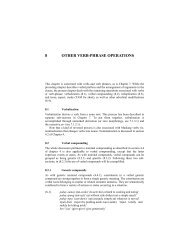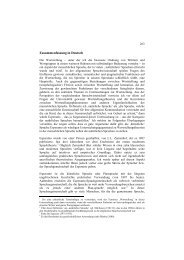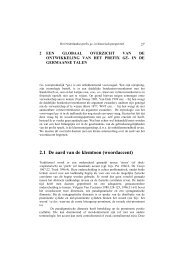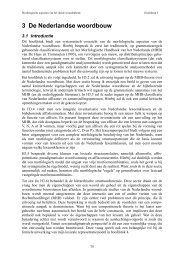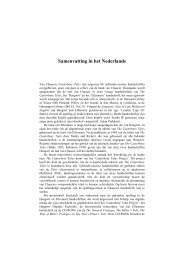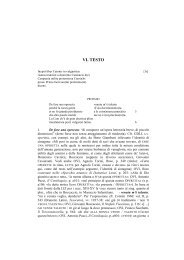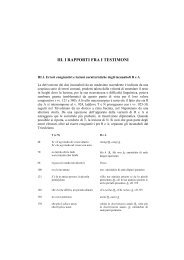Chapter 9 - LOT publications
Chapter 9 - LOT publications
Chapter 9 - LOT publications
You also want an ePaper? Increase the reach of your titles
YUMPU automatically turns print PDFs into web optimized ePapers that Google loves.
Accounts of SLI in Afrikaans<br />
indicated either on (one or more of) these modals 156 or with the temporal<br />
auxiliary het, in which case the modal auxiliary may occur in either its<br />
present tense or its past tense form. For example, Hy wil geloop het, Hy wou<br />
geloop het, and Hy wou loop, could all have the same temporal reference.<br />
For Afrikaans then, the ATOM would predict that verbs may occur in<br />
their infinitival form in the language of children with SLI. This<br />
prediction does not seem to be linguistically significant, however: The<br />
present tense verbs must also appear in a form resembling the infinitival<br />
form in the language of both typically developing children and adult<br />
speakers of Afrikaans. Therefore, this prediction of the ATOM is not<br />
testable as far as present tense constructions in Afrikaans are concerned.<br />
However, the claim made by the ATOM that verbs cannot always move<br />
to check the tense feature of the TP (seeing that the TP is not always<br />
present) is a potentially significant one. On this claim, the sentences of<br />
Afrikaans-speaking children with SLI should have a grammatical word<br />
order, if one assumes that (i) Afrikaans is SOV underlyingly, and (ii) the<br />
subject is initially merged in the specifier position of vP. If there is no TP<br />
to which the subject can move, then the subject will still move to the<br />
specifier position of CP. The verb will move from the V position to C<br />
(instead of moving from V to T and then from T to C), and the object<br />
will remain in situ, arguably having its (accusative) case checked under<br />
agreement with small v at LF (i.e., after the direct object has moved to<br />
the specifier position of vP). As indicated in (160), this will still render a<br />
grammatical surface SVO word order in matrix clauses. Also, in<br />
embedded clauses, the (grammatical) surface SOV word order should<br />
still be rendered, regardless of whether or not the TP is present. This is<br />
illustrated in (161).<br />
156 The modal then has a different form, e.g., moes ‘had to’ instead of moet ‘must’, or kon<br />
‘could have’ instead of kan ‘can’.<br />
252



